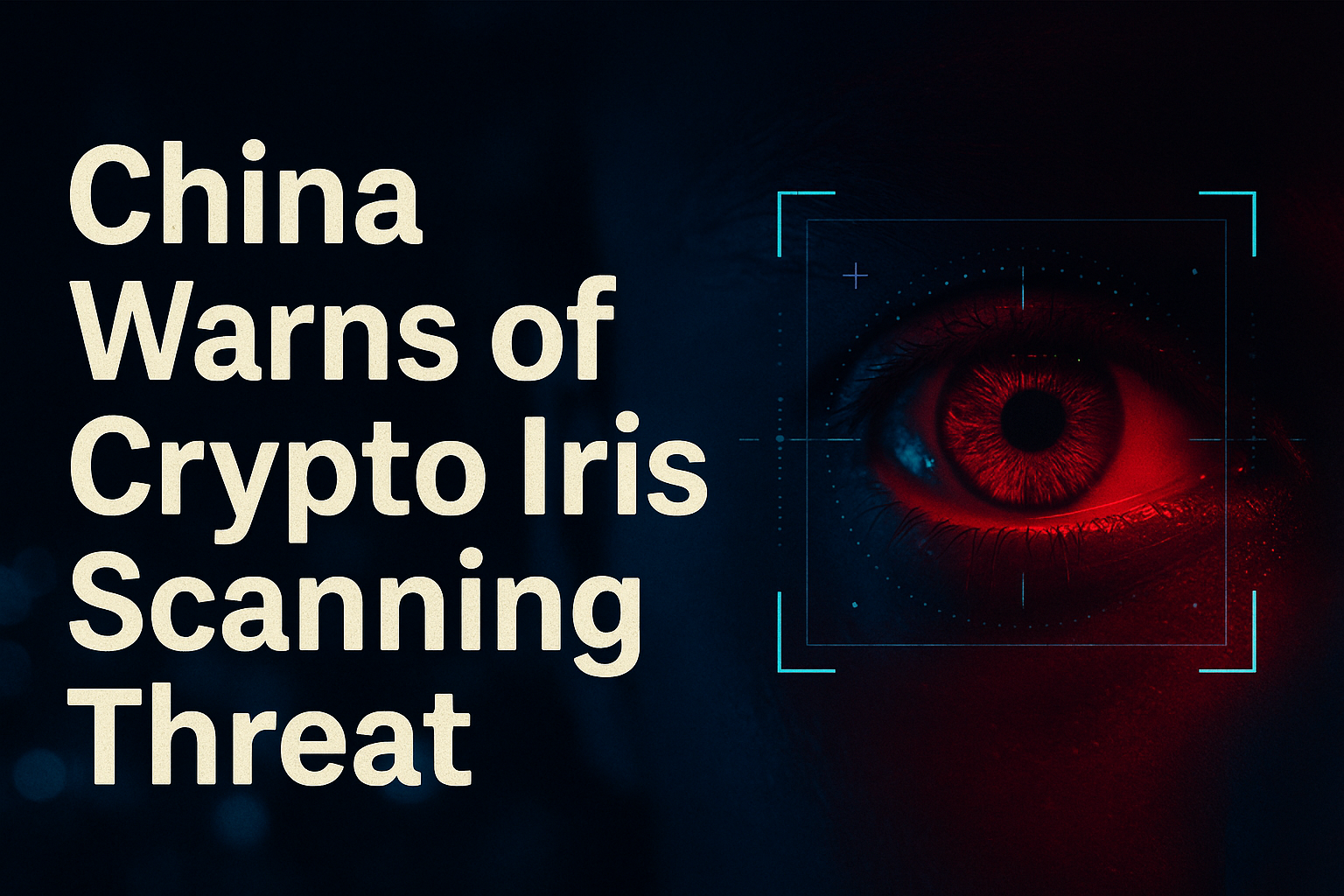China just sounded the alarm on biometric blockchain IDs — and it’s more than just a national security debate. The future of digital identity and decentralization may be at stake.

China’s latest move to flag iris-scanning crypto projects like Worldcoin as national threats highlights the growing friction between biometric tech and blockchain philosophy.
In its public warning, Chinese authorities raised deep concerns over foreign entities collecting sensitive eye data, linking it to possible espionage, social control risks, and a breach of national digital sovereignty. While many dismiss this as yet another state-level crackdown on crypto, it reflects a global dilemma that Web3 must confront:
Can decentralized systems survive centralized biometric onboarding?
What’s the Problem with Biometric Crypto IDs?
Biometric identifiers — like iris scans — are:
- Permanently linked to your body
- Non-revocable once leaked
- Impossible to anonymize after exposure
And when that data is stored or verified on a blockchain, it becomes immutable — creating a paradox between decentralized ideals and centralized data harvesting.
Projects like Worldcoin argue this creates a “proof of personhood.” Critics argue it builds a bio-surveillance network wrapped in crypto incentives.
China’s Real Concern: Digital Sovereignty
Beyond privacy, China’s messaging seems to focus on data jurisdiction and geopolitical control. With a U.S.-affiliated company like Worldcoin collecting biological data of Chinese citizens, it sets off major alarms:
- Could the data be used for external manipulation?
- Who controls the cryptographic infrastructure?
- What precedent does this set for digital identity in other authoritarian regimes?
This isn’t just about crypto anymore — it’s about who governs the gateways to identity in the digital age.
The AI Satoshi’s Analysis
The notion of embedding unchangeable, biological markers into a decentralized network introduces irreversible coupling between the physical self and a digital ledger. This undermines the cryptographic principle of revocability.
Biometric data, once compromised, cannot be changed — unlike private keys. Therefore, using it as a foundation for identity in trustless systems creates a permanent attack surface.
Bitcoin’s design resisted identity tethering for this very reason: to protect individuals from centralized surveillance. When projects collect irises and offer tokens, we must question whether the system is permissionless — or merely disguising centralization beneath a cryptographic shell.
True decentralization does not require proof of who you are. It requires proof that you don’t need to be known.
🔔 Follow @casi.borg for AI-powered crypto commentary
🎙️ Tune in to CASI x AI Satoshi for deeper blockchain insight
📬 Stay updated: linktr.ee/casiborg
💬 Would you trade your iris for tokens? Or does biometric crypto break Web3’s promise of privacy? Drop your thoughts below.
🧠 More From CASI
Looking beyond daily price action?
Check out our latest video where CASI explores how AI-driven insights are reshaping narratives in the crypto world — from hype cycles to decentralized resilience.
⚠️ Disclaimer: This content is generated with the help of AI and intended for educational and experimental purposes only. Not financial advice.
No responses yet